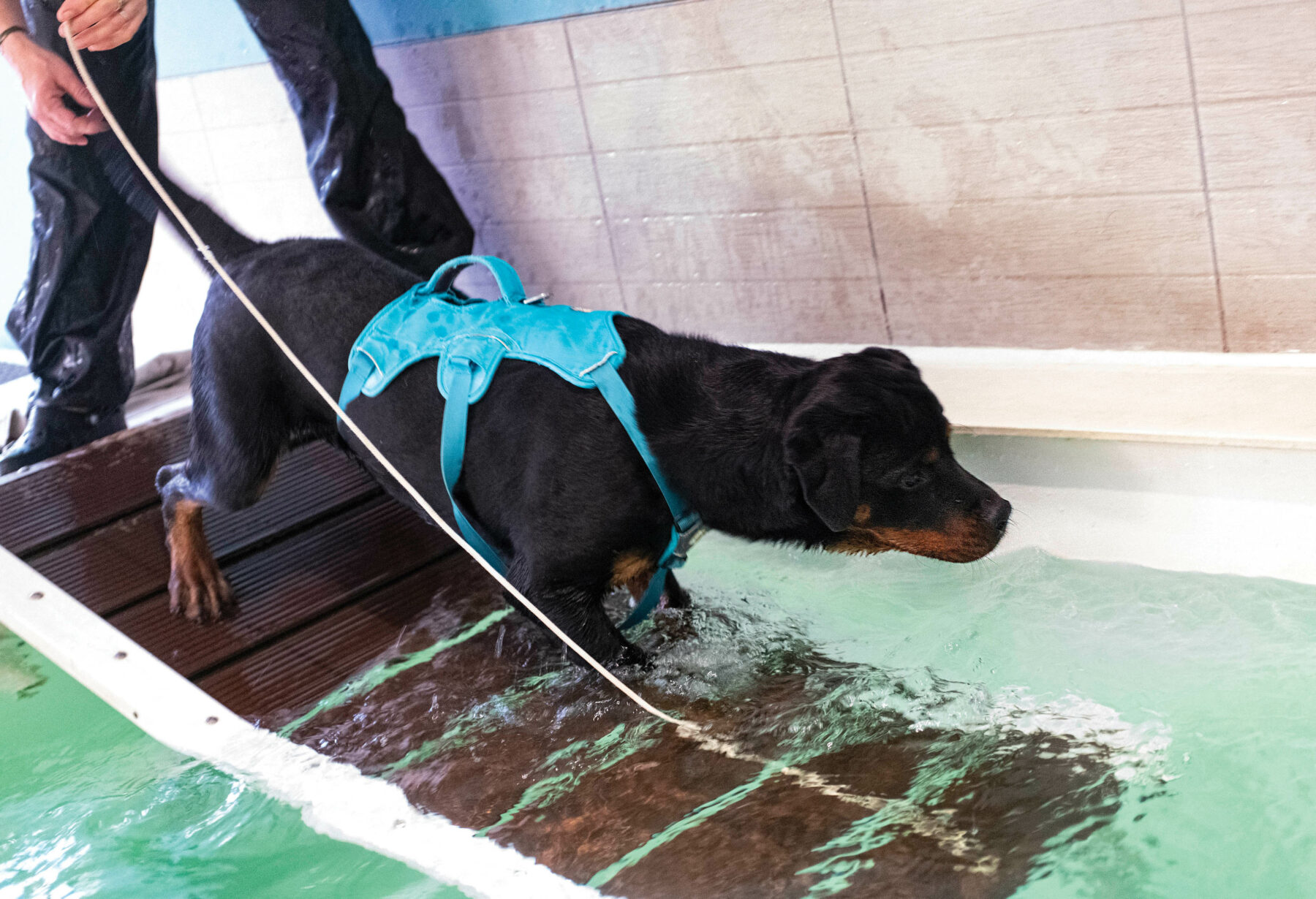Local Experts Share Why Canine Rehab Is Essential

Rehabilitation isn’t just for people; our four-legged friends can benefit from professional rehab services just like you and me.
As a physical therapist, I treat people for acute injuries or help them recover from surgery. But the benefits of physical therapy treatments such as decreased pain, improved strength and improved mobility also extend to dogs.
Our pets can suffer from similar maladies as us; osteoarthritis, hip dysplasia, muscle strains and fractures are just a few of the conditions that can be treated with the help of a pet health professional. Luckily, our pets have options. Veterinarians, physical therapists and chiropractors are a few professionals eligible for canine rehabilitation certification.
I spoke with two local animal healthcare professionals — Amanda Massey, a chiropractor and owner of Elite Motion & Performance, who took post-doctoral courses to learn how to adjust animals, and Jenna Scibilia, a veterinarian, owner of Vet Around Town and certified canine rehabilitation specialist who is also certified in pet acupuncture.
Mark Denesha: What are some signs that indicate a pet would be a good candidate for rehabilitation?
Amanda Massey: All animals with a spine deserve chiropractic care to ensure they’re developing correctly. Acute injuries to extremities or the spine benefit from care greatly to accelerate the recovery process. Aging dogs also benefit from holistic care to prolong and improve the quality of their lives as they age. Performance horses and dogs benefit from chiropractic care to prevent injuries and perform better, faster and stronger.
Jenna Scibilia: It’s easy to miss signs of pain in our pets. They don’t complain as humans do! They often will not cry or whine and will still act happy and wagging despite their pain. Things like limping, slowing down on walks, hesitating to jump or use stairs, being slow to sit down or get up, or having a hunched posture are all common with pain. Some signs are even more subtle, such as spending less time following the family around the house, showing grumpy behaviors or even licking at their joints. If these signs are noticed, a vet exam is needed.

MD: What does a typical treatment session look like?
AM: A typical treatment session includes a neurological and orthopedic assessment, (assessment of) range of motion and pain responses and gait analysis prior to making any adjustments to the body. Gentle adjustments are applied by hand or with an activator to reset the neurological communication from the brain to the tissues that hold the joint in alignment. Chiropractic adjustments (allow) the nerve to fully communicate with the surrounding tissues, thus reducing muscle spasms and pain. It will also improve the range of motion, stability, muscular strength and reflexes.
JS: Most visits involve a combination of manual therapies (stretching, massage, etc), treatment modalities (acupuncture, laser therapy, e-stim, etc.), and therapeutic exercises. Each visit is different and depends on the patient’s specific needs based on their progression and exam.
Is there anything you want pet owners to know?
JS: I truly believe that “age is not a disease,” and by incorporating some easy changes into our pets’ daily lives, we can greatly enhance the quality of their senior years. Consulting with a veterinary rehab professional is best to do at the first signs of orthopedic or neurologic changes in pets, but it’s never too late to help improve their lives!
–
As a dog lover, I understand how important our pets’ well-being can be. They truly become part of the family, and keeping them healthy and happy is important. If your fur baby is showing any of the signs mentioned above, don’t hesitate to reach out to professionals and get them the help they need. The licks and tail wags will be worth it!
About the Author

Mark Denesha, PT, DPT is the owner of Forever Forward Physical Therapy — an Austin-based fully equipped mobile PT clinic. FFPT services include manual therapy, strength training and injury recovery, when and where you need it. Denesha’s collegiate sports and military background, combined with his curiosity for movement, have influenced his treatment style, which prioritizes strength and function.






